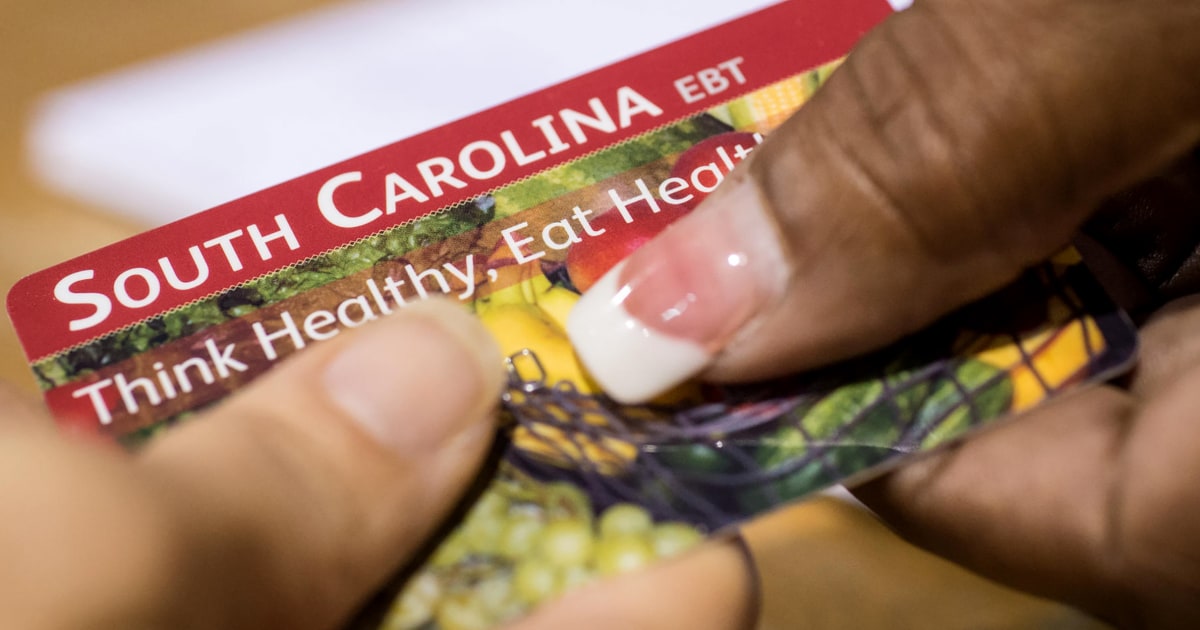Food inflation rises in the US 1:02
(CNN) --
This month, approximately 16 million vulnerable households receiving Supplemental Nutrition Assistance Program (SNAP) benefits in 32 states and Washington City will see their benefits drop by at least $ 95 every month, according to estimates by the left-leaning Center on Budget and Policy Priorities.
On average, those affected are expected to lose between 30% and 40% of their SNAP benefits, said Diane Whitmore Schanzenbach, an economist at Northwestern's Institute for Policy Research.
Why will millions of people lose food stamps or SNAP benefits in the US?
The reason is the end of an emergency Covid-19 policy that had increased SNAP benefits to the maximum level for each recipient.
In 18 states, those extra benefits had already expired.
States with the most households near the edge of that benefit "cliff" will suffer the greatest average loss of benefits.
At least four states—Hawaii, Minnesota, New Hampshire, and Wisconsin—will see a median benefit loss of more than $200 a month.
But even for households that lose the minimum $95 increase, the decrease represents a substantial change in their monthly benefits.
The impact will be felt "across the board," Dottie Rosenbaum, director of SNAP Federal Policy at the Center on Budget and Policy Priorities (CBPP), told CNN.
advertising
Although every SNAP recipient will be affected, food shortages do not affect all families equally.
Black households and households with children are more likely to experience food shortages, according to data from the US Census Bureau's Household Pulse Survey.
The emergency allocations had a clear impact: Whitmore Schanzenbach estimates that they reduced food insufficiency by 9%.
With the end of this "temporary boost," Rosenbaum says families already feeling the pressures of inflation will face even more difficulty purchasing groceries.
In 2020 and 2021, food insecurity remained close to 2019 levels of about 10%, after an initial spike early due to the pandemic, according to the CBPP.
"It's quite surprising that when you look at the Great Recession, we see increases in food insecurity that were quite large, whereas during the pandemic, food insecurity was flat and hit 20-year lows for families with children, largely Part of it is thanks to SNAP and other covid aid,” Rosenbaum said.
Because the emergency allotments increased each recipient's benefits to the maximum amount, the highest income households, who previously received the minimum amount of SNAP benefits, will see the largest decrease in their monthly allotment.
Although these households have higher incomes than other SNAP recipients, they are still low income.
For example, many elderly recipients receive fewer SNAP benefits because of Social Security income, Whitmore Schanzenbach said.
Although research indicates that ending this program is likely to increase food insufficiency, keeping each recipient at the maximum level of benefits indefinitely is not an option, Whitmore Schanzenbach said.
"There's no way to finish it without dealing damage because starting it reduced the damage," Whitmore Schanzenbach said.
"Fortunately, we've come out of this pandemic with a pretty strong, very strong economy, so hopefully we'll be able to absorb the biggest headwinds."
Food US Inflation









